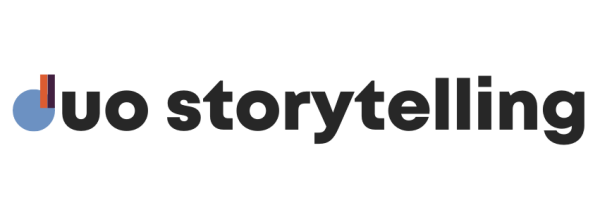For decades it seemed the only way to get published was through a traditional publishing house—but no more! The last ten years have shown that self-publishing your book can be just as successful. With runaway success stories like E. L. James’s 50 Shades of Grey, it’s not hard to see the appeal. And with better resources available than ever before, it’s even easier to make it happen.
Self-Publishing vs. Traditional Publishing
“Traditional” publishing avenues have always been rife with roadblocks and gatekeepers. From needing a literary agent to champion your vision, to having to share creative control over your story, it’s easy to get discouraged. Self-publishing removes many of these obstacles and puts control squarely in your hands. You’re able to maintain your creative process start to finish—from story to cover design and marketing materials. Self-publishing also allows you to retain a higher percentage of your profits without a cut going to a publishing house.
Types of Self-Publishing
Some authors will go all in and complete every aspect of their books themselves, from formatting to cover design. Although it’s a lot of work, it can be rewarding to roll up your sleeves and truly build something from the ground up. A full DIY approach requires an author cover all the bases of a more traditional team, meaning they have to both write the book and make sure it looks nice on a printed page.
For self-publishing authors who want a little more guidance, there are ways to get the assistance you need without losing creative control. Working with freelance marketers, editors, and designers is an easy way to get the services of a team without having to go through a publishing house.
Whether you want to seek the help of others or do it all on your own, here are steps to keep in mind.
Set Writing Goals—and Stick to Them!
It’s pretty simple: you can’t publish a book that doesn’t exist. This may seem like a no-brainer, but it can be easy to get so caught up in the idea of publishing that the actual story falls to the wayside. Setting yourself up for success first means taking control of your creative process. Set goals—whether it’s word count, pages, or time spent writing—and don’t let yourself slack! The toughest part of any publishing journey is finishing the first draft.
Self-Revise Your Draft
As much as we’d like to think otherwise, no first draft is publish-ready. Even the most seasoned and celebrated authors go through the process of revision and rewriting. The truth is that it’s hard to see the full picture until it’s down on the page, and that full picture often needs some fine-tuning. Take some time away to “forget” your draft and then return with fresh eyes a few days or weeks later. You can also ask trusted friends to take a look at your first draft and provide feedback. Asking friends for input also gives you a “preview” of how the general public might receive your story—an invaluable piece of insight!
Once you’ve decided what needs revising, get down to doing it! The more polished you can make your draft, the easier it is to edit in the future.
Find an Editor
This step can be difficult if you’re wanting to go full DIY, but every writer needs an editor. All the greats have one (or more), and you should to. It tough to spot mistakes and plot holes in your own work. After all, you know exactly what you’re trying to say, so your brain tends to fill in the gaps even when they’re still on the page. If you can’t or don’t want to hire an editor, you can always ask for the help of bookish friends. You may receive less-nuanced feedback and edits than you would with a professional, but it still gets a second set of eyes on your work.
However, if you can swing it, hiring an editor can make all the difference for your book. Not only are professional editors trained to spot grammatical mistakes, they’re also skilled at analyzing story mechanics and are familiar with target reader demographics. This kind of expertise can help you tighten up your story and tap into your ideal readership.
Most editors have different specialties, which you can learn more about here.
Start Marketing Before You Publish
This step can go anywhere in your process, but it definitely shouldn’t be left for last! Marketing your book before you publish gets readers invested early on, which makes a successful launch much easier. Talk about your book with friends and family, get involved in writer groups, and post about your writing process to start generating buzz!
Format Your Book
Once you’ve gone through the editing process and made sure all of your i’s are dotted and your t’s crossed, it’s time to make sure your text looks good on the page. There are a number of free formatting software options across the internet for the ambitious DIYer, as well as several options for assistance. Websites like Fiverr host to dozens of freelance book formatters, and there are also many companies that will help you format for a fee. Formatted Books is our favorite, and they also offer cover design! Some companies can also help with marketing.
Design Your Cover
Even though we’re not supposed to judge a book by it, an attractive cover can make all the difference for an indecisive reader. Without the same marketing tools as a traditional publishing house, self-published authors rely even more on capturing a reader’s attention with a great cover. If you’re artistic by nature, going it alone may be the most cost-effective choice.
However, if you aren’t an author-turned-graphic-designer, hiring outside help may be the best option. Take the time to find a designer who understands your vision, and don’t be too shy to ask for what you want.
Pro Tip: Always make sure that you have rights to use any images or fonts in your cover design. This will avoid any future headaches with ownership claims!
Don’t Stop Marketing Your Book
Seriously, don’t let up! The last thing you want is to have your launch approaching when no one has been talking about your book for days or weeks. Document the final stages of your publishing process as content for your social media to keep the excitement alive.
You may also choose to connect with freelance marketers who specialize in generating buzz for new authors. These professionals often have an inside track with reader demographics and can be a major help in boosting the visibility of your work.
Publish Your Book
Whether your self-publishing an e-book, a physical book, or both, you’ll need to choose a platform to sell your book. The simplest route from manuscript to published work is to tap into the e-book marketplace. Platforms like Amazon’s Kindle Direct Publishing make the process as painless as possible—and it’s free!
However, for some people an e-book just won’t do. For those who want to fill shelves with physical copies, there are a number of print-on-demand (POD) services available to self-publishing authors. POD publishers offer exactly what it the name suggests: they produce copies of your book as they’re ordered. In the past, authors have been stuck having to preorder copies in the hundreds or thousands, which is quite the cost-sink. Although costs per book can be slightly higher than average, POD keeps authors from having to deal with boxes of paperbacks and a lighter bank account.
Celebrate!
No matter how long or stressful the journey was, there’s no greater feeling than seeing your work come to life. Sit back, relax a little, and enjoy the feeling of crossing the finish line. Have a launch party, celebrate your hard work. You deserve it!
Looking for other articles on writing and storytelling? We’ve got you covered.
Find us on Instagram and Facebook for more.
Sign up for our newsletter to receive TWO FREE toolkits: Demystifying Query Letters and The Roadmap to Successful Self-Publishing.


